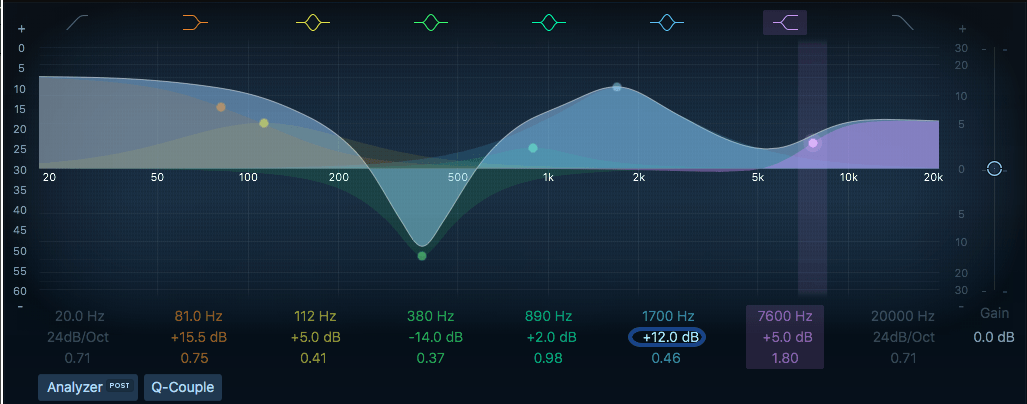

If you refer back to Part One of this article, where I walked you through some EQ mixing fundamentals, you’ll see how useful a parametric EQ could be for this purpose - with total and ultimate EQ control right at your fingertips, making the pieces of a mix fit together is much, much easier and far more effective! With a parametric EQ, you can do some powerful and very specific tone coloring. The sweeping trick discussed above is often used with parametric EQ, with the added advantage that the bandwidth can be set up to affect a very wide range of frequencies around the center, or a very narrow range, depending on your needs and the specific application. With a parametric EQ, gain, frequency, and bandwidth can each be adjusted on its own, independently of the others.

This is the most adjustable and flexible type of EQ, and can pretty much address almost any EQ task. If you listen carefully, the frequency you’re seeking should jump right out at you! Once you’ve found the desired frequency, then back off on the gain control, adjusting it to taste or as necessary to achieve the desired result. Then sweep the center frequency s-l-o-w-l-y from its lowest to highest point. Try this trick sometime - if you are trying to hunt down a specific frequency on a track (such as the attack on a guitar, the snap of a kick drum, or the beefiness in the bass), run the track through a semi-parametric EQ and boost the gain control full up. This is a great tool to have, as the ability to pinpoint a specific frequency has tremendous advantages. For example, the channel strips on a Mackie 1604 has fixed high and low controls, but a semi-parametric mid-band control. This is what you’ll usually find on nearly any decent, mid-priced mixer. While the bandwidth is still fixed, the center frequency can be adjusted usually along a very wide range. Needless to say, this is the least flexible of all the types of EQ, and are good for little else except very broad tone-shaping. The “mid” control (if there is one) is a band-notch filter with a fixed center frequency and bandwidth, usually at least a few octaves at around 2 kHz or so. The high (or “treble”) and low (“bass”) knobs are generally shelf-type filters with fixed cutoff frequencies (usually at about 100 Hz and 10 kHz or thereabouts) and pretty generous slopes. These usually consist of two or possibly three rotary pots. Here, you only have the option of controlling “how much” - the “what” is fixed and is not adjustable. This is the type of EQ you’re likely to find on the vast majority of home hi-fi preamps, and on the channel strips of the cheapest mixers. Parametric get the most realtime play for me inside Vegas though I use all three sometimes, depends on what I'm going for. This explains it much better than I could. I meant to say parametric, sorry about that.


 0 kommentar(er)
0 kommentar(er)
